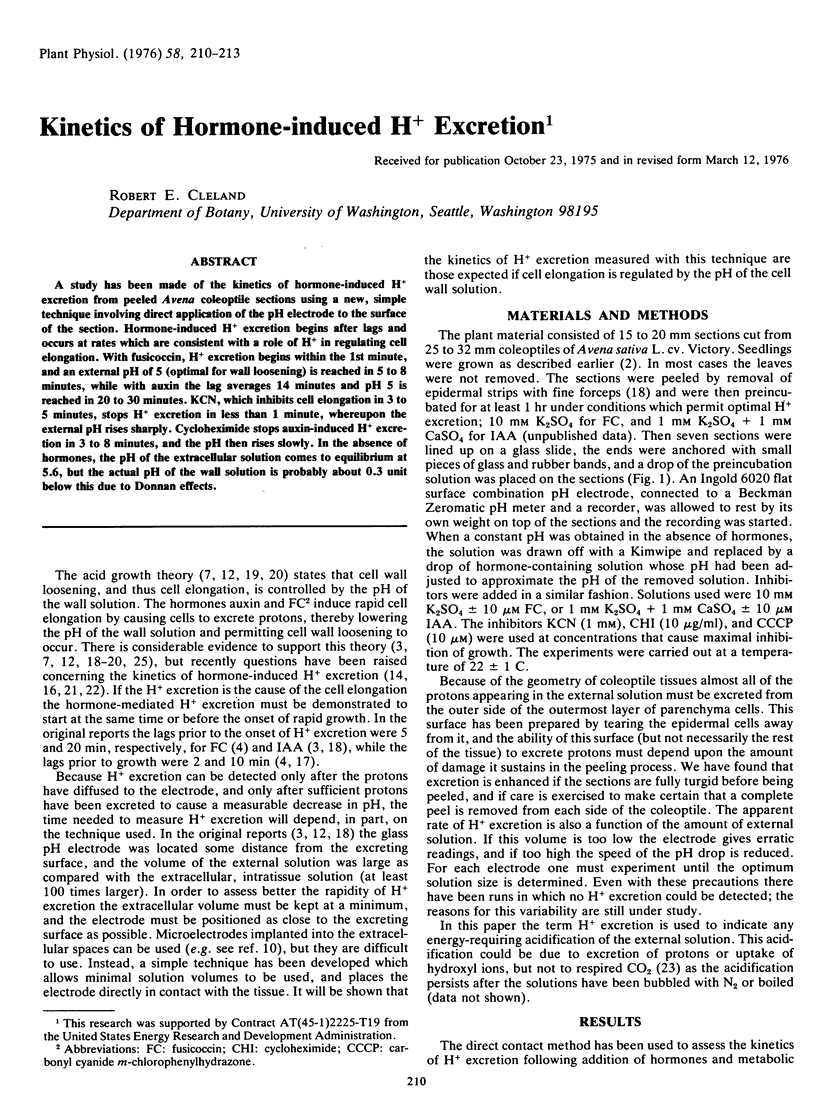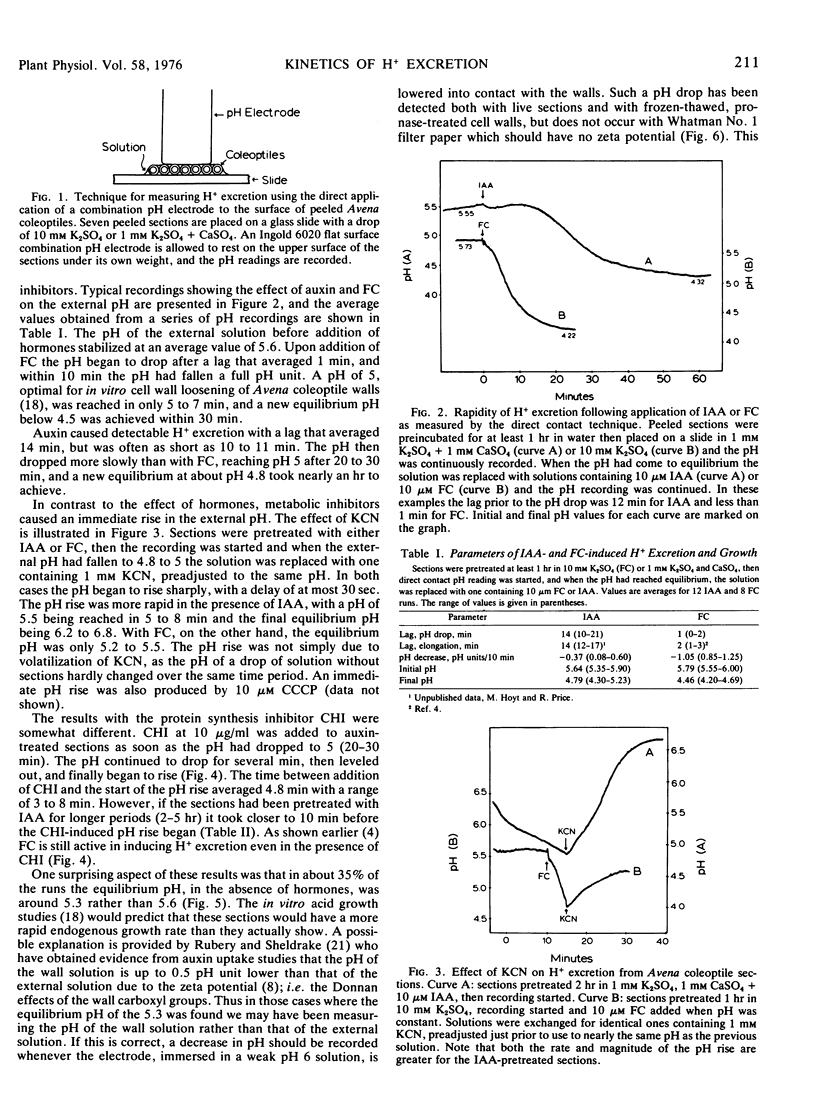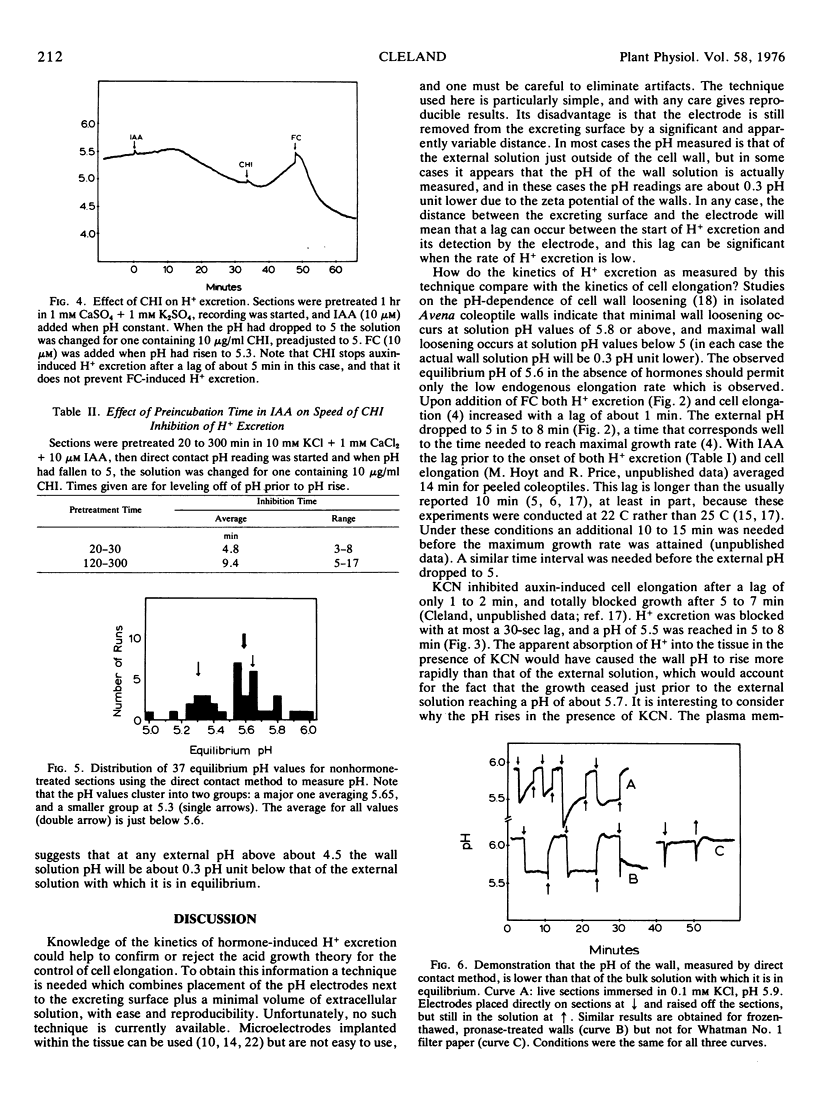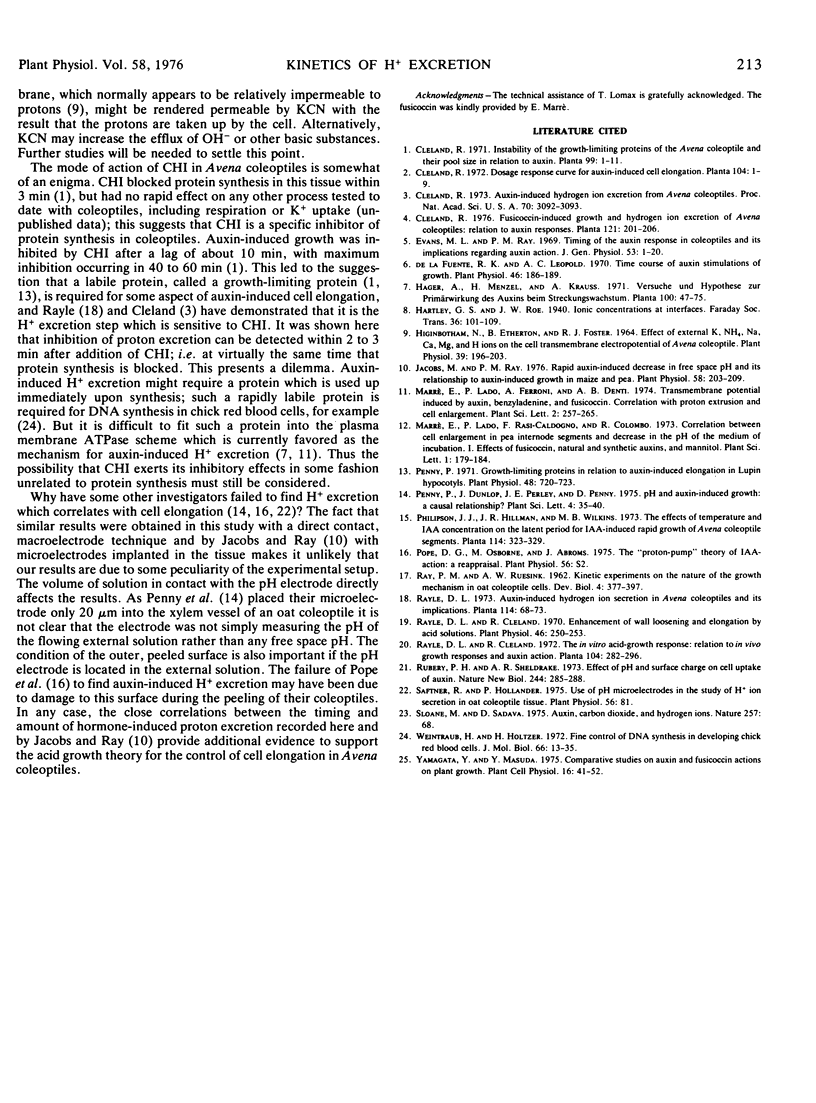Abstract
A study has been made of the kinetics of hormone-induced H+ excretion from peeled Avena coleoptile sections using a new, simple technique involving direct application of the pH electrode to the surface of the section. Hormone-induced H+ excretion begins after lags and occurs at rates which are consistent with a role of H+ in regulating cell elongation. With fusicoccin, H+ excretion begins within the 1st minute, and an external pH of 5 (optimal for wall loosening) is reached in 5 to 8 minutes, while with auxin the lag averages 14 minutes and pH 5 is reached in 20 to 30 minutes. KCN, which inhibits cell elongation in 3 to 5 minutes, stops H+ excretion in less than 1 minutes, whereupon the external pH rises sharply. Cycloheximide stops auxin-induced H+ excretion in 3 to 8 minutes, and the pH then rises slowly. In the absence of hormones, the pH of the extracellular solution comes to equilibrium at 5.6, but the actual pH of the wall solution is probably about 0.3 unit below this due to Donnan effects.
Full text
PDF



Selected References
These references are in PubMed. This may not be the complete list of references from this article.
- Cleland R. Auxin-induced hydrogen ion excretion from Avena coleoptiles. Proc Natl Acad Sci U S A. 1973 Nov;70(11):3092–3093. doi: 10.1073/pnas.70.11.3092. [DOI] [PMC free article] [PubMed] [Google Scholar]
- Dela Fuente R. K., Leopold A. C. Time course of auxin stimulations of growth. Plant Physiol. 1970 Aug;46(2):186–189. doi: 10.1104/pp.46.2.186. [DOI] [PMC free article] [PubMed] [Google Scholar]
- Evans M. L., Ray P. M. Timing of the auxin response in coleoptiles and its implications regarding auxin action. J Gen Physiol. 1969 Jan;53(1):1–20. doi: 10.1085/jgp.53.1.1. [DOI] [PMC free article] [PubMed] [Google Scholar]
- Higinbotham N., Etherton B., Foster R. J. Effect of External K, NH(4), Na, Ca, Mg, and H Ions on the Cell Transmembrane Electropotential of Avena Coleoptile. Plant Physiol. 1964 Mar;39(2):196–203. doi: 10.1104/pp.39.2.196. [DOI] [PMC free article] [PubMed] [Google Scholar]
- Jacobs M., Ray P. M. Rapid Auxin-induced Decrease in Free Space pH and Its Relationship to Auxin-induced Growth in Maize and Pea. Plant Physiol. 1976 Aug;58(2):203–209. doi: 10.1104/pp.58.2.203. [DOI] [PMC free article] [PubMed] [Google Scholar]
- Penny P. Growth-limiting Proteins in Relation to Auxin-induced Elongation in Lupin Hypocotyls. Plant Physiol. 1971 Dec;48(6):720–723. doi: 10.1104/pp.48.6.720. [DOI] [PMC free article] [PubMed] [Google Scholar]
- Rayle D. L., Cleland R. Enhancement of wall loosening and elongation by Acid solutions. Plant Physiol. 1970 Aug;46(2):250–253. doi: 10.1104/pp.46.2.250. [DOI] [PMC free article] [PubMed] [Google Scholar]
- Rubery P. H., Sheldrake A. R. Effect of pH and surface charge on cell uptake of auxin. Nat New Biol. 1973 Aug 29;244(139):285–288. doi: 10.1038/newbio244285a0. [DOI] [PubMed] [Google Scholar]
- Weintraub H., Holtzer H. Fine control of DNA synthesis in developing chick red blood cells. J Mol Biol. 1972 Apr 28;66(1):13–35. doi: 10.1016/s0022-2836(72)80003-2. [DOI] [PubMed] [Google Scholar]


